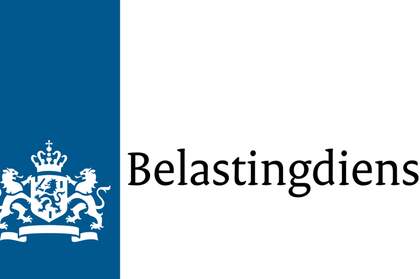In this overview you can learn about how the tax system works in the Netherlands, in particular the annual Dutch income tax return.
Different kinds of tax in the Netherlands
Whether you're a Dutch citizen or an expat, you are required to pay taxes if you earn money while living in the Netherlands.
The Belastingdienst (Dutch tax office) collects taxes through a variety of streams. Here are the main tax types that you will most likely encounter in the Netherlands:
Income tax (inkomstenbelasting)
If you earn money or are working in the Netherlands then you need to pay tax on your income. You declare your income tax via your annual tax return (aangifte inkomstenbelasting) which can be done online or with the help of a Dutch tax advisor.
If you are employed by a company then your income tax will be withheld from your salary by your employer, this is known as wage tax (which is contained within payroll tax). If you are self-employed in the Netherlands then you must calculate and pay your income tax via the annual tax return.
Payroll tax (loonheffing)
Payroll tax is tax and other contributions that are withheld from an employee’s salary by the employer, which saves the employee from having to pay them later as income tax. The payroll tax levy is made up of tax on your salary (wage tax or loonbelasting) and national insurance contributions for pensions, unemployment allowance and other Dutch benefits and allowances.
Your payroll tax is deducted from your salary every month. It's important for expats to keep the deduction in mind when discussing salary and employment contract terms for a new job. There is a large difference between your gross salary (bruto salaris) which includes tax, and your net salary (netto salaris), after tax is deducted.
VAT sales tax (BTW / omzetbelasting)
The Belastingdienst also collects taxes via the sales or revenue tax (omzetbelasting), known in the Netherlands as BTW (belasting over de toegevoegde waarde). All businesses, excluding some foundations and associations, must add BTW to the price of their goods and services. There are three different levels of BTW: 0%, 9% and 21% (the most common rate).
Businesses (including freelancers) must calculate the BTW they have earned and spent via the quarterly sales tax declaration (BTW aangifte). They then pay this amount to the Belastingdienst. A list of other kinds of taxes can be found at the end of this page.
Annual income tax return (aangifte inkomstenbelasting)
Even though wage tax has already been withheld from your gross salary as an advance levy or payment on your income tax, you often still need to complete an annual income tax return. The Dutch tax office will inform you if you are required to do so.
The tax return is necessary to balance out your "prepaid" tax with other financial aspects such as:
- Your partner’s income.
- A mortgage.
- Additional income, savings or investments.
- Tax deductions such as studies or healthcare costs.
Do I need to do a Dutch tax return?
The Dutch fiscal year runs from January 1 to December 31. In January, you will receive a letter (aangiftebrief) from the Belastingdienst asking you to complete a tax return for the previous year. If your financial affairs are simple and do not include any of the above elements then you may not receive a letter and you may not need to submit an annual tax return. You can always visit a Belastingdienst branch office or call the BelastingTelefoon on 0800 0543 to find out if you need to complete an income tax return and/or to request the letter.
What is the deadline for the Dutch tax return?
The time period for submitting your annual income tax return is from March 1 to April 30, unless you or your accountant request an extension (uitstel aangifte). You can do this via the BelastingTelefoon or the Belastingdienst website (you'll need your DigiD). If you do not submit your tax return or request an extension before May 1 then you can be fined.
The Box system on the tax return
Income on the Dutch tax return in the Netherlands is divided into three categories: Box 1, Box 2 or Box 3 (named after the tick boxes on the form). Each box applies to different kinds of income and has a different tax rate. Here is an overview of the box categories and their different income sources:
Box 1: Income from salary
Income in Box 1 is taxed at different rates depending on how much you earn. Check the table below to see the rate(s) that apply to your gross salary.
What does Box 1 include?
Box 1 income includes, amongst others:
- Wages from your job or employment.
- Income from your business.
- Income as a freelancer, artist, childminder or professional athlete.
- Income from pension and benefits.
- Gratuities such as tips.
- Foreign income.
Box 1 deductions include, amongst others:
- Deductible costs of homeownership.
- Expenditure on income, such as premiums for annuities.
- Alimony and other maintenance obligations.
- Specific medical expenses.
- Temporary stay at a home for the severely disabled.
- Tuition costs and other study expenses.
- Maintenance of a heritage-listed building.
- Waived venture capital.
Box 1 tax rates for 2025
You haven't reached the state pension age (AOW-leeftijd) in 2025:
| Annual taxable income (gross) | Total rate |
|---|---|
| € 0 - 38.441 | 35,82% |
| € 38.441 - 76.817 | 37,48% |
| € 76.817+ | 49,50% |
You have reached the state pension age (AOW-leeftijd) in 2025 and were born in or after 1946:
| Annual taxable income (gross) | Total rate |
|---|---|
| € 0 - 38.441 | 17,92% |
| € 38.441 - 76.817 | 37,48% |
| € 76.817+ | 49,50% |
You have reached the state pension age (AOW-leeftijd) in 2025 and were born in or before 1945:
| Annual taxable income (gross) | Total rate |
|---|---|
| € 0 - 40.502 | 17,92% |
| € 40.502 - 76.817 | 37,48% |
| € 76.817+ | 49,50% |
Box 1 tax rates for previous years
Here are the box 1 tax rates for the previous years:
Box 1 tax rates for 2024
| Annual taxable income (gross) | Total rate |
|---|---|
| € 0 - 75.518 | 36,97% |
| € 75.518+ | 49,50% |
Box 1 tax rates for 2023
| Annual taxable income (gross) | Total rate |
|---|---|
| € 0 - 73.031 | 36,93% |
| € 73.031+ | 49,50% |
Box 1 tax rates for 2022
| Annual taxable income (gross) | Total rate |
|---|---|
| € 0 - 69.399 | 37,07% |
| € 69.399+ | 49,50% |
Box 1 tax rates for 2021
| Annual taxable income (gross) | Total rate |
|---|---|
| € 0 - 68.508 | 37,10% |
| € 68.508+ | 49,50% |
Box 1 tax rates for 2020
| Annual taxable income (gross) | Total rate |
|---|---|
| € 0 - 20.711 | 36,65% |
| € 20.712 - 68.507 | 38,10% |
| € 68.508+ | 51,75% |
Box 1 tax rates for 2019
| Annual taxable income (gross) | Total rate |
|---|---|
| € 0 - 20.384 | 36,65% |
| € 20.385 - 34.300 | 38,10% |
| € 34.301 - 68.507 | 38,10% |
| € 68.508+ | 51,75% |
Box 1 tax rates for 2018
| Annual taxable income (gross) | Total rate | Tax to pay per bracket |
Cumulative tax payable |
|---|---|---|---|
| € 0 - 20.142 | 36,55%* | € 7.362 | € 7.362 |
| € 20.143 - 33.994 | 40,85%* | € 5.658 | € 13.020 |
| € 33.995 - 68.507 | 40,85% | €14.099 | € 27.119 |
| € 68.507+ | 51,95% |
* Includes 27,65% national insurance contribution
Box 1 tax rates for 2017
This table lists the income tax rates / brackets (tarieven) for people below retirement age:
| Annual taxable income (gross) | Total rate |
Tax to |
Cumulative tax payable |
|---|---|---|---|
| € 0 - 19.982 | 36,55%* | € 7.303 | € 7.303 |
| € 19.983 - 33.791 | 40,8%* | € 5.634 | € 12.937 |
| € 33.792 - 67.072 | 40,8% | €13.578 | € 26.515 |
| € 67.073+ | 52% |
* Includes 27,65% national insurance contribution
Box 2: Income from interest in a limited company
Box 2 covers income from a substantial interest or holding (at least 5%) in a limited company such as a BV. The rate you pay on your taxable income in box 2 in 2025 depends on the amount of the income:
| Taxable income | Percentage |
|---|---|
| up to €67.804 | 24,5% |
| €67.804+ | 31% |
In 2024, it was taxed at 24,5% and 33%. In 2023, 2022 and 2021 it was taxed at 26,90%. In 2020, this was 26,25%, and in 2018 and 2019 income in Box 2 was taxed at 25%.
Box 2 income includes:
- Regular benefits such as dividends.
- Capital gains, such as gains on shares.
Box 3: Assets and savings
Do you have a second home, savings, investments or shares? Or do you have any debts? In Box 3, you can declare your income (vermogen). The value of your assets, minus debts, is calculated once annually, on January 1, to determine your net capital value.
Box 3 assets include:
- Stocks and shares.
- Bank and savings accounts.
- A second home or investment property.
- Endowment insurance policy (if not connected to an owner-occupied residence).
Box 3 exemptions:
Some assets are exempt from being taxed in Box 3, these include:
- The property you live in (if you own it).
- Moveable property such as furniture, art or a car (unless they are an investment).
- Certain kinds of insurance.
- Investments in forests, nature or certain green, social, ethical, cultural or startup projects.
Tax-free capital (heffingsvrij vermogen)
A fixed amount of your assets (assets minus your debts) is exempt from tax. This is called tax-free capital or heffingsvrij vermogen. Everyone is entitled to this:
| Year | Tax-free capital - individual | Tax-free capital with partner |
|---|---|---|
| 2025 | €57.684 | €115.368 |
| 2024 | €57.000 | €114.000 |
| 2023 | €57.000 | €114.000 |
| 2022 | €50.650 | €101.300 |
| 2021 | €50.000 | €100.000 |
| 2020 | €30.846 | €61.692 |
| 2019 | €30.360 | €60.720 |
| 2018 | €30.000 | €60.000 |
If you are above retirement age then these values are higher.
Tax calculated on capital (grondslag sparen en beleggen)
The part of your assets that is included in determining your tax is called grondslag sparen en beleggen. Because of the Supreme Court's ruling on December 24, 2021, the way box 3 is calculated has changed. You can use this tool on the Belastingdienst website to calculate Box 3.
On your taxable income from savings and investments, you pay:
| Year | Percentage |
|---|---|
| 2025 | 36% |
| 2024 | 36% |
| 2023 | 32% |
| 2022 | 31% |
30% ruling
The 30% reimbursement ruling is a tax advantage for certain expat employees in the Netherlands. The most significant benefit is that the taxable amount of your gross Dutch salary is reduced from 100% to 70%. So 30% of your wage is tax-free. Visit the 30% ruling page for more information.
Dutch taxes and non-residents
If you have income from another country, or you live outside the Netherlands and have a Dutch income, then you usually need to do the annual Dutch income tax return. If you moved to or from the Netherlands during the course of the year then filing your tax return can be a wise move as you may be entitled to a substantial tax refund.
Tax partners in the Netherlands
The Belastingdienst has a broad interpretation of who your tax partner (fiscaal partner) can be. Most commonly your tax partner is the person you are married to, have a registered partnership with, or simply live with in a relationship.
General & Labour tax credits
Every taxpayer in the Netherlands is entitled to receive the general tax credit (algemene heffingskorting) and every working person is entitled to receive the labour tax credit (arbeidskorting or loonheffingskorting). Both Dutch tax credits are calculated and credited to the tax balance on your salary by your employer, so it is not necessary to do anything to receive them. If you work for yourself then the tax credits are calculated when you complete your annual tax return.
The value of your tax credit depends on how much you earn, decreasing as your income increases:
Below pension age in 2025:
| Taxable income | General tax credit |
|---|---|
| € 0 - € 28.406 | € 3.068 |
| € 28.406 - € 76.817 | € 3.068 - 6,337% x (taxable income - € 28.406) |
| € 76.817+ | € 0 |
Other Dutch tax benefits
There are several kinds of tax benefits (toeslagen) in the Netherlands for people on a low income. These include:
- Health care allowance (zorgtoeslag)
- Rent benefit (huurtoeslag)
- Unemployment benefits (WW uitkering)
- Child benefits
Other forms of taxation in the Netherlands
There are many other forms of direct and indirect taxation in the Netherlands. These include:
Import tax (douane)
A tax paid on goods received or imported from abroad. The amount depends on the value of the goods and if you receive them as an individual or for your business. All imported goods are taxes with VAT as of July 2021. The previous exemption for goods with a value of 22 euros or less no longer exists.
Motor vehicle tax (motorrijtuigbelasting)
This tax is paid when you buy or import a motor vehicle, or when a vehicle is put under your name. The amount depends on the type of vehicle (car, van, motorcycle, lorry etc.), weight and type of fuel. It falls under the environmental tax category.
Inheritance tax (erfbelasting)
A tax on wealth acquired by inheritance after someone dies, if their properties and financial affairs were in the Netherlands.
Gift tax (schenkbelasting)
A tax paid on the value of anything accepted as a gift from a resident in the Netherlands.
Corporate tax (vennootschapsbelasting)
Applies to companies that are established in the Netherlands and to those that receive income from the Netherlands but are not established here.
Transfer tax (overdrachtsbelasting)
The transfer tax must be paid by a buyer when purchasing a property or business. The most common form of transfer tax applies when someone buys a house or apartment, for which the rate is currently 2% of the property value.
From January 1, 2021, people aged 18-35 who are buying their first property in the Netherlands will not have to pay the transfer tax. From 2025, the costs of this first property may not exceed 525.000 euros.
Gambling tax (kansspelbelasting)
From January 1, 2025, a gambling tax of 34,2% must be paid on prizes worth more than 449 euros, won in any (offline) game of chance.
Dutch tax penalties
As of July 1, 2015, the Dutch tax office has increased the penalties for undeclared income. The penalty for voluntarily declaring hidden income, wealth or inheritance has risen from 30 to 75%. Hidden income that is discovered by the Belastingdienst risks a fine of up to 300%. However, from 2018 onwards, voluntary disclosure is no longer an option for taxpayers with unreported savings and investment income.
Dutch income calculator
To calculate your net salary, you can check the Blue Umbrella income calculator:










